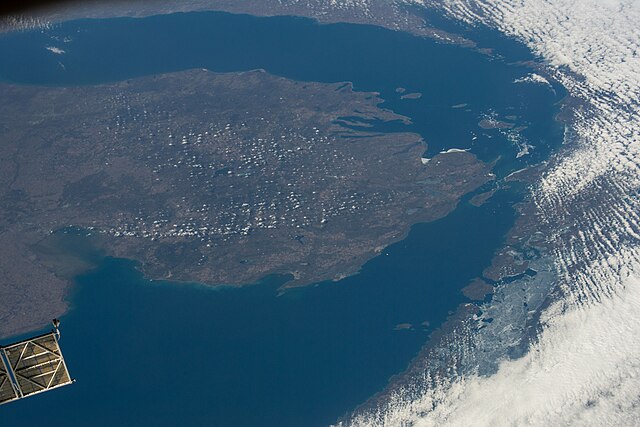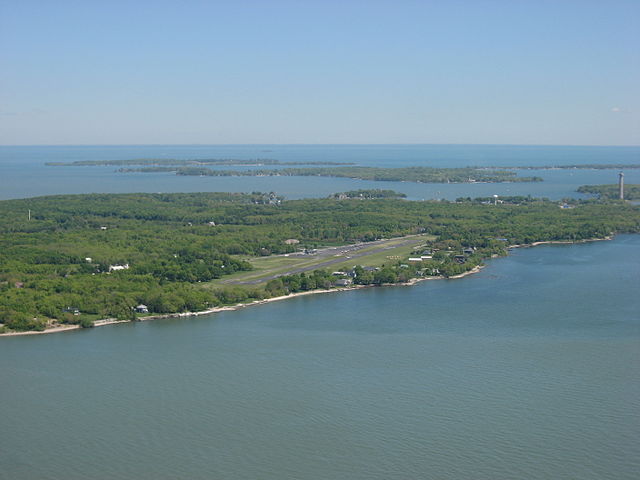The Snowbelt, Snow Belt, Frostbelt, or Frost Belt is the region near the Great Lakes in North America where heavy snowfall in the form of lake-effect snow is particularly common. Snowbelts are typically found downwind of the lakes, principally off the eastern and southern shores.
Lake-effect snow is the cause of the regional nickname
Northeast Ohio Primary and Secondary Snow Belts
The Great Lakes, also called the Great Lakes of North America, are a series of large interconnected freshwater lakes in the east-central interior of North America that connect to the Atlantic Ocean via the Saint Lawrence River. The five lakes are Superior, Michigan, Huron, Erie, and Ontario, and they are in general on or near the Canada–United States border. Hydrologically, Michigan and Huron are a single body of water joined at the Straits of Mackinac. The Great Lakes Waterway enables modern travel and shipping by water among the lakes.
The Great Lakes seen from NASA's Aqua satellite in August 2010. From left to right: Lake Superior, Michigan, Huron, Erie, Ontario
Chicago on Lake Michigan is in the western part of the lakes megalopolis and the site of the waterway linking the lakes to the Mississippi River valley
Lake Michigan–Huron with north oriented to the right; taken on April 14, 2022, during Expedition 67 of the International Space Station. Green Bay is at the upper right and Saginaw Bay is on the left.
South Bass Island in Lake Erie






